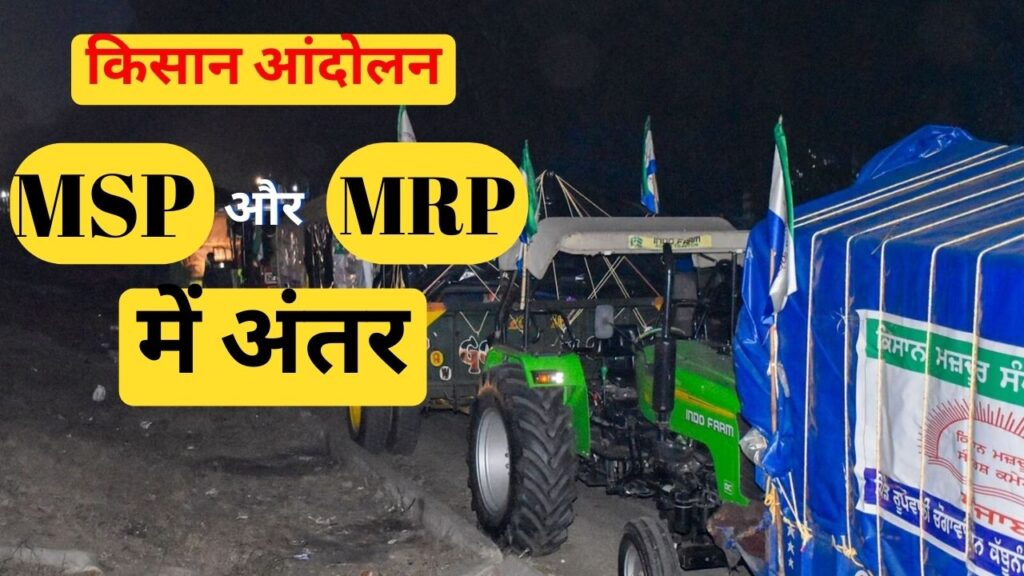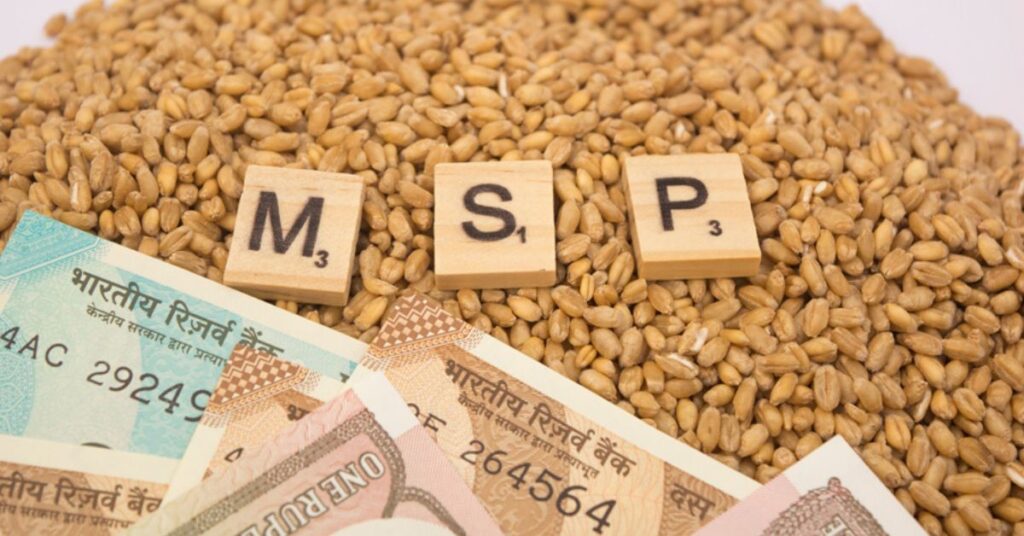Farmers vs Government : Farmers are back on the streets, demanding nothing less than a legal guarantee for Minimum Support Price (MSP). But amidst the uproar, misinformation is swirling, claiming that fulfilling this demand will bankrupt the nation. Let’s delve into the truth behind the farmers’ demands and the economic implications, all while keeping our tongues firmly planted in our cheeks.
Table of Contents
ToggleMSP vs MRP :
First things first, let's differentiate between MSP and MRP.

What is MSP?

MSP isn’t just a random number pulled out of thin air. It’s meticulously calculated based on the cost of seeds, fertilizers, labour, and even the farmer’s opportunity cost. Think of it as a lifeline for those toiling under the sun to feed the nation.
Calculation of MSP in India | Formulas for Calculating MSP

A2 and FL Costs:
Initially, MSP was calculated based on the A2 (actual expenses on inputs like seeds, fertilizers, etc.) and FL (imputed value of family labour) costs. This method was commonly used before more comprehensive formulas were suggested.
C2 Cost:
The High-Level Committee on Long Term Grain Policy, led by economist Abhijit Sen, proposed the inclusion of C2 cost for MSP calculation. C2 cost includes A2 and FL costs along with additional costs like owned capital and rental value of land. This comprehensive approach aimed to provide a more accurate reflection of farmers’ expenses.
Swaminathan Commission Report:
The M.S. Swaminathan-led National Commission on Farmers recommended setting MSP at least 50% higher than the weighted average cost of production. This recommendation emphasized the need to ensure farmers’ incomes are sustainable and fair.
Government's MSP Policies:
Despite these recommendations, the government’s MSP policies have primarily relied on A2+FL costs, with some adjustments, but have not fully incorporated the C2 cost or the Swaminathan Commission’s suggestions.
Farm Laws Fiasco - Farmers vs Government
The Farm Laws Fiasco refers to the series of protests and controversies surrounding the three agricultural reform laws passed by the Indian government in September 2020. These laws aimed to liberalize the agricultural sector by allowing farmers to sell their produce directly to private buyers and bypass government-regulated wholesale markets, among other provisions. However, the laws faced widespread opposition from farmers, particularly in states like Punjab and Haryana, leading to one of the largest farmer protests in Indian history.
Following the government’s announcement of the repeal, farmer leaders agreed to end their protests and vacate the protest sites at Delhi’s borders. The decision to wind up the protests was seen as a pragmatic move by the farmers’ unions, as their primary demand had been met.
Economic Crisis Concerns Regarding MSP Implementation
Some individuals, including news anchors and commentator’s express concerns that implementing MSP could lead to an economic crisis. This argument typically revolves around the following points:
- Cost Burden: Critics argue that guaranteeing MSP for all crops would impose a significant financial burden on the government, potentially costing trillions of rupees. They fear this could strain the national budget and lead to inflationary pressures.
- Market Disruptions: There are concerns that enforcing MSP could disrupt market dynamics and lead to inefficiencies in resource allocation. Critics argue that setting a minimum price floor may distort market prices, discourage private investment, and hinder agricultural market reforms aimed at increasing efficiency.
- Trade Implications: Some worry that MSP policies could adversely impact India’s trade competitiveness by making its agricultural products more expensive compared to those of other countries. This could potentially affect export volumes and trade relations.
However, it’s essential to note that these concerns are subject to debate, and there are differing perspectives on the potential economic impact of MSP implementation, and it could be managed in a manner that addresses concerns while supporting farmers’ livelihoods.
Arguments Against MSP in Favor of Free Market Principles:
Critics of MSP often gives arguments against MSP from the perspective of free market principles, asserting that government intervention through MSP contradicts the principles of a free-market economy. The transcript discusses these arguments in detail:
- Market Distortion: Opponents of MSP argue that government-mandated price floors distort market mechanisms by artificially inflating prices. They contend that allowing market forces to determine prices would lead to more efficient resource allocation and greater productivity in agriculture.
- Private Sector Efficiency: Critics suggest that reliance on MSP undermines the efficiency and innovation potential of the private sector. They argue that removing government intervention would encourage private investment, technological advancements, and competition, ultimately benefiting both producers and consumers.
- Global Competitiveness: Advocates of free-market principles assert that MSP policies could hinder India’s competitiveness in global markets. They argue that by subsidizing domestic agriculture through MSP, Indian products may become less competitive internationally, affecting export prospects and economic growth.
However, proponents of MSP counter these arguments by emphasizing the importance of ensuring farmers’ welfare, addressing income disparities, and maintaining food security. They argue that while free-market principles have their merits, they must be balanced with social and economic considerations to achieve inclusive and sustainable development.

Jugaad on Two Wheels: The Hilarious Bike Parcel Hack in Karnataka
The Great Karnataka Bike Parcel Hack: A Jugaad Masterclass #RapidoParcel: In a creative yet controversial move, ride-hailing platform Rapido has found a way around Karnataka’s

Denmark’s Digital Sovereignty Revolution: Linux and LibreOffice Lead the Way
Introduction to Denmark’s Bold Move In June 2025, Denmark’s Ministry of Digital Affairs made headlines by embracing digital sovereignty, ditching Microsoft Windows and Office 365

🏏Sports as a Business Strategy: Insights from Vijay Mallya’s RCB Ownership
🧠 Sports as a Business Strategy (Tool) In modern business, few platforms offer better engagement and emotional connection than sports. From football clubs in Europe

